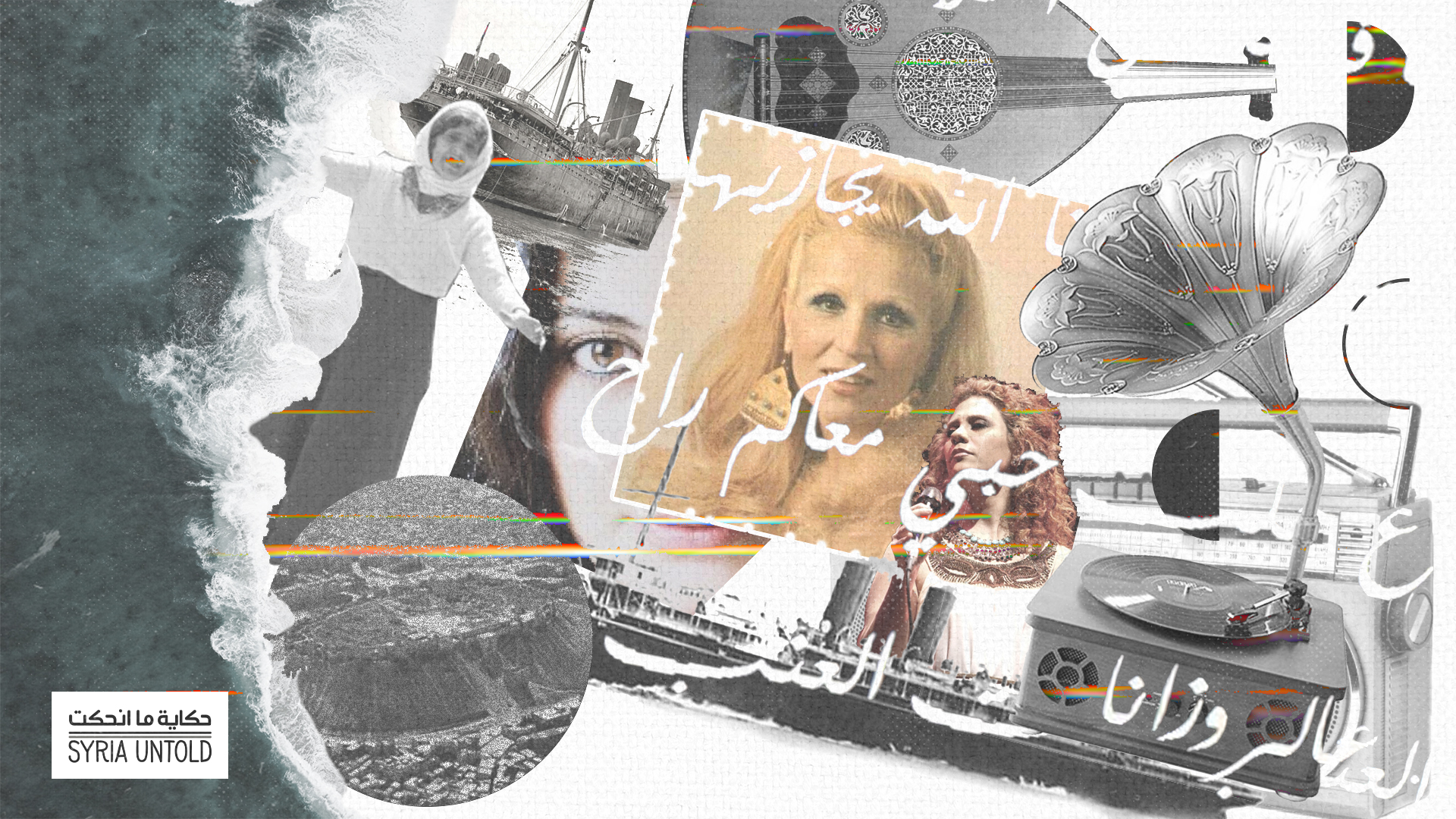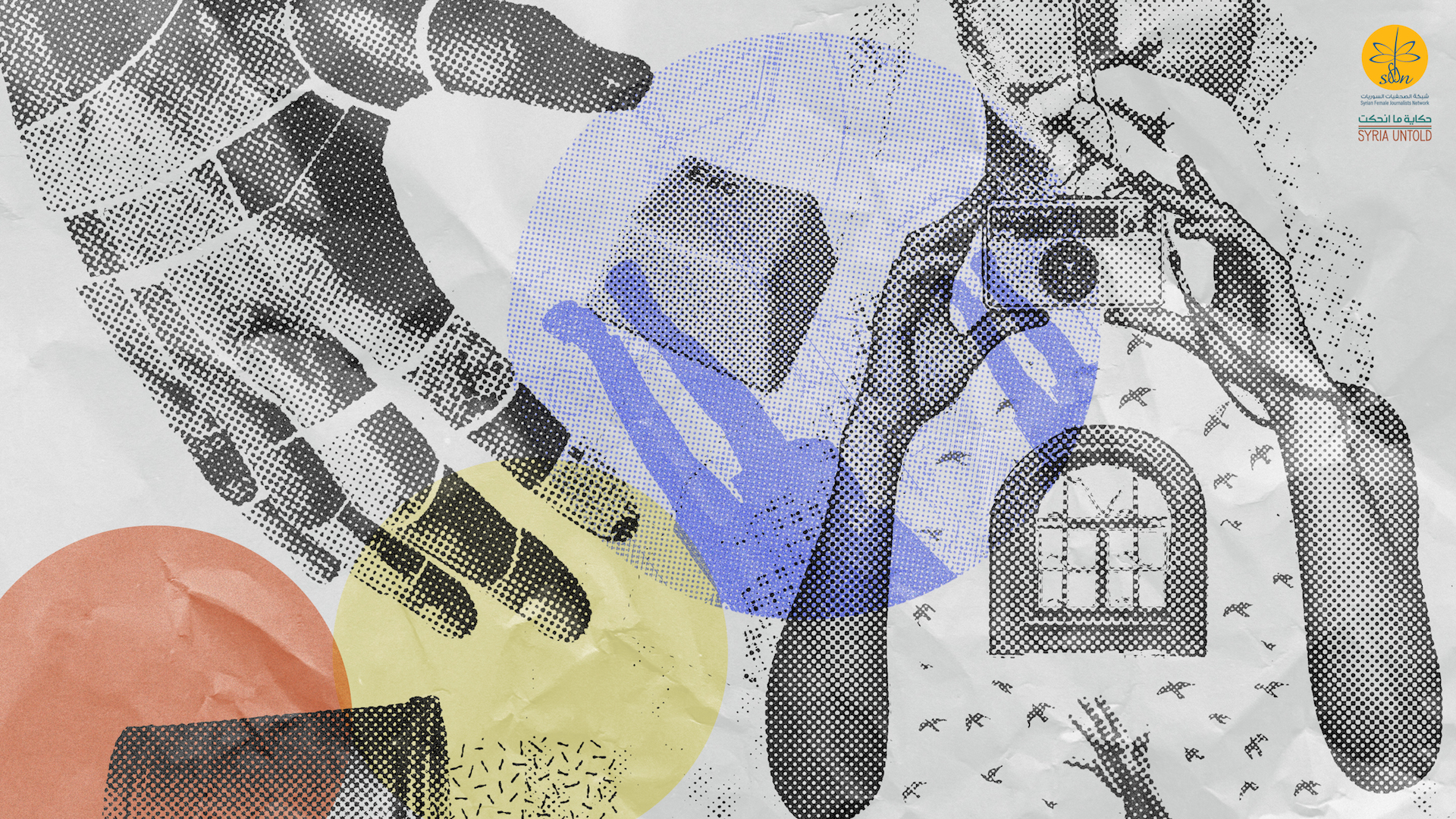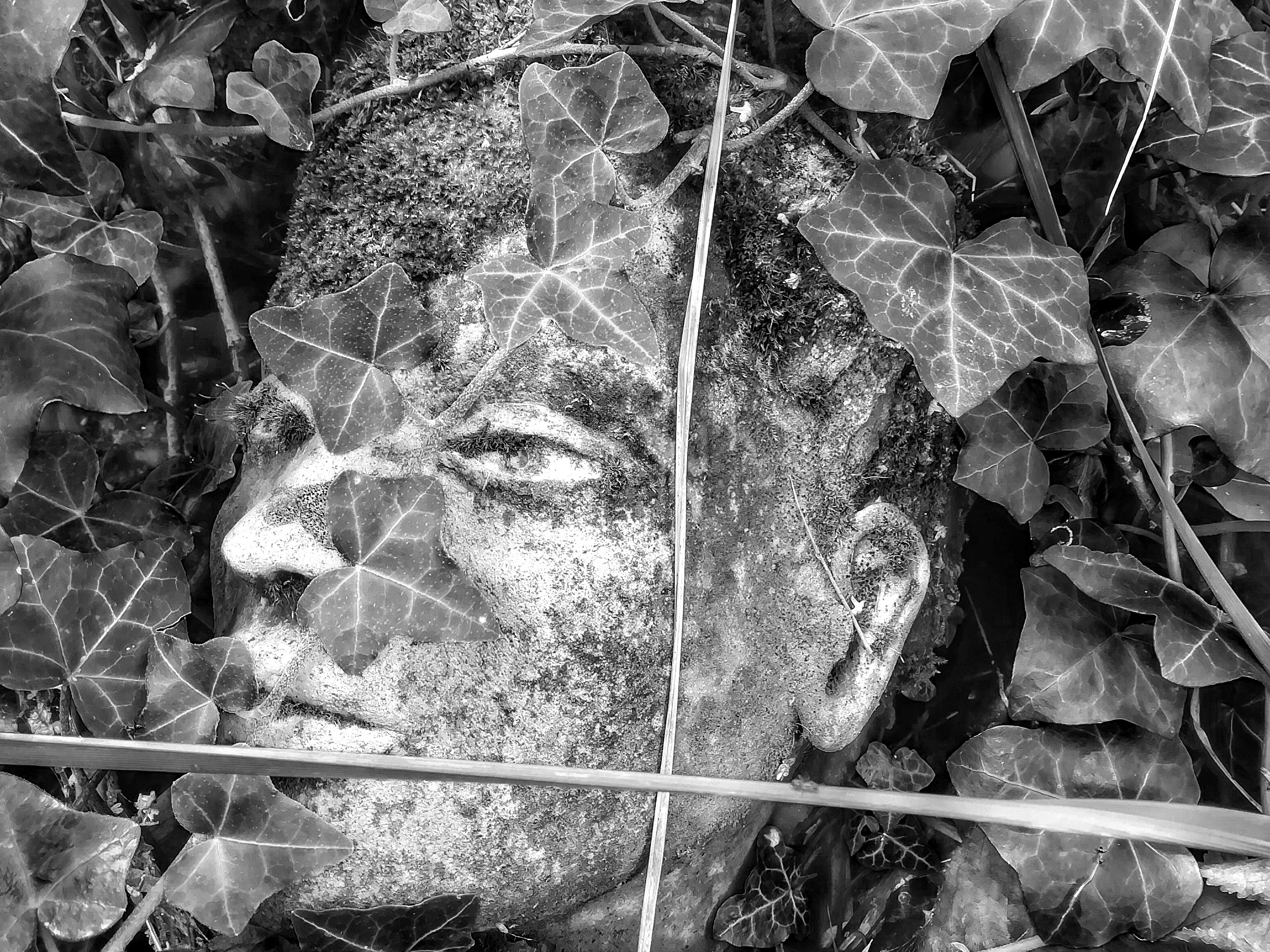This article is part of SyriaUntold’s ongoing series on Syrian music.
Walk down Washington Street in Lower Manhattan between the Battery Parking Garage and Albany Street, and you’ll see virtually no signs that this area was once home to one of the largest communities of Syrians in the United States.
Groups like the Washington Street Historical Society have worked tirelessly to preserve the three remaining buildings—the facade of St. George Church, now the St. George Tavern, an old tenement, and a former community center—that stood during the heyday of New York City’s “Syrian Quarter,” or Little Syria.
The only visible evidence now connecting those three buildings to Little Syria is the cornerstone of St. George Tavern. Carved into weathered marble, and obscured by pipes sticking haphazardly from the sidewalk are the words: “St. George Syrian R.C. Church.”
From 1890 to 1940, Little Syria stood as the mother colony to Syrian and Lebanese communities across the United States. The three-block radius around Washington and Rector was home to newspapers, magazines, restaurants, jewelry shops, banks, barbers, grocers, churches, a mosque, record stores. Khalil Gibran lived and wrote there, helping re-establish the Pen League with other Syrian and Lebanese authors. This was the Mahjar, America’s Arab diaspora.
Peddlers wheeled fresh fruit carts, vendors sold cool drinks from large containers to those coming or going on the day’s selling route, and, in the summer, older children supervised, pushing and pulling their younger siblings in prams as men gathered to smoke arghilehs. Little Syria’s roads provided respite from the cramped quarters of the tenements that lined Washington Street.
Tucked within these streets were three Arab American record labels—Maloof Phonograph Company in the 1920s and 1930s, A.J. Macksoud’s Phonograph Company from the 1910s to the 1930s, and Alamphon Records in the 1930s and 1940s—now among the most recognizable to record collectors.
These labels filled an important cultural gap—by the 1920s, the US’ two big phonograph record companies, Victor and Columbia, cut back on recording and selling Arab music.
And while companies like Beirut-based Baidaphon recorded Syrian and Egyptian musicians and sold their records at home and throughout the Arab diaspora in the early 1900s, by the 1910s that was changing. Mahjari musicians in the United States began to record music themselves, for mahjari audiences.
The music that New York City’s mahjari artists performed from the 1910s through the following 30 years included recorded poems, folk songs from the homeland and original compositions telling of loss, love, fondness for relatives, faith in God and favorite foods from home; the names, tunes, beats and rhythms connected them to their roots and shaped their nostalgia for what they had left behind.
There was much to miss, even before leaving what was then known as Ottoman Syria: today’s Lebanon, Syria, Jordan and Palestine. The region’s silk industry and other trades were in decline. Political instability and poverty were on the rise.
A famine, a ship and a folk song that spanned borders
18 December 2020
Thousands of former Ottoman subjects soon found themselves in New York City, Boston, Detroit. They searched for new employment, or simply an opportunity to peddle. Perhaps they could start their own stores and businesses someday. They stepped off boats and trains to places far from home, from the cultures and languages they remembered as familiar.
Alexander Maloof was 12 years old when his mother and siblings left their hometown of Zahleh, in present-day Lebanon, in 1894. The Maloofs were decidedly middle class. One facet of their relative prosperity: an interest in the performing and literary arts movement that gripped Egypt and Greater Syria during the late 19th and early 20th centuries. That movement was the Nahda, the Arab Renaissance.
The arrival of immigrants from Greater Syria coincided with a boom of gramophone machines, phonograph cylinders and flat-disc records.
And as Arab musicians in Cairo and Beirut recorded music throughout the 1890s and 1900s, thousands of miles away in Little Syria a precocious Alexander Maloof began composing and publishing music for the piano.
Within a few years, Maloof published more music, married, teamed up with musician Joseph Henius, and offered piano lessons to people both inside and beyond New York’s Syrian community. From a young age, Maloof listened to traditional Arabic music such as mawwal, Arab folk music forms such as the ataaba, and experimented with fusing these with American marches, fox trots, and ragtime.
Meanwhile, by 1907, 29-year-old musician Abraham J. Macksoud, now using the moniker A.J. Macksoud, opened a phonograph record store in Little Syria. It was less than a decade since he had first arrived in the United States. Most of the records in his store would have been Arabic music imported to the US, recorded for people back home in Syria and elsewhere in the Arab world. Columbia and Victor had already begun to record the songs of mashriqi musicians back home to sell to Arab immigrants in the United States, but as late as 1911, no Arab or Ottoman immigrant to the US had recorded specifically for a mahjari audience.
That was about to change.
On 24 July 1913, Alexander Maloof, now a well-accomplished songwriter and composer, recorded the piano solo B 13834-1, #17443 Al-Ja-Za-Yer (“Algeria”) for the Victor Talking Machine Company.
With Maloof's song, Mahjari musicians had now found a home for recording their music.
Although Maloof became a naturalized citizen just the previous year and spoke at least Arabic and English, the marketing team at Victor decided the label would be printed only in English. The sole indicator of Maloof’s ethnic background on the label of his debut record is the word “Syrian” printed opposite “Piano Solo.”
Maloof’s debut recording positioned him as a musical tour guide to the Middle East, a cultural pioneer and an emerging ambassador of nostalgia. His songs referenced everything from Syria's music, foods, sights, sounds, people, and ways of seeing and understanding the world.
The number of Syrian Muslims to emigrate to the United States remained relatively small during the first wave of emigration from 1880 to 1941.
Still, in 1916, Columbia recorded one of only a few Syrian Muslim immigrants, Mohamed ZainEldeen. Born in Homs, Syria in 1892, ZainEldeeen arrived in New York in May 1912. By the fall of 1916, he had cut seven songs on six double-sided discs for Columbia, including one of the first recordings of a Call to Prayer (Columbia E3383, #44511) in the United States.
While most Arab immigrants became naturalized citizens and remained in the States, some like George Aziz, Ilyas Wardiny, Germanos Shehadi (1872-1934), and Mohamed ZainEldeen returned to Lebanon or Syria. Mohamed ZainEldeen himself moved back to Homs, where he died in 1972.
As the number of Arab immigrant and Arab American musicians grew on Columbia and Victor’s rosters, A.J. Macksoud moved and opened two new record shops at 52 Broadway and 89 Washington Street.
Little Syria grew significantly by the outbreak of World War I and the US’ entry into the conflict. Back home, the Ottoman Empire was falling apart and had aligned itself with Germany, while Lebanon plunged into famine. Nearly thirty percent of the population perished as a result.
Although most Syrian and Lebanese American and immigrant musicians avoided service during WWI, future Maloof singer Anthony Shaptini (1893-1955) served along with 15,000 other Arab Americans for the US.
By contrast, Columbia Records singer Mohamed ZainEldeen enlisted and served in the pre-WWI Ottoman Army for three months.
The 1920s marked the era when Victor and Columbia lost their monopoly on lateral-cut recording technology, but it is also the period they slashed efforts to record and issue new Arabic-language music.
To fill in the gaping hole left in the industry, and in a stroke of entrepreneurial genius, pianist and composer Alexander Maloof established his own record label. He kept up a break-neck pace appearing on radio, running his record label, composing songs and selling sheet music to publishers.
In October 1923, Maloof finally recorded his “Egyptian Glide” and a second track, “Pharaoh,” on his label’s pressing company, Gennett Records. And despite its long hiatus of recording Syrian American artists, in 1926 the Victor Talking Machine Company even brought Maloof back into the studios, this time with his larger orchestra, to record “Desert Wail” and “Kurdistan.”
Originally released on the Maloof label in 1924, this was Maloof’s homage to developing political changes in the Middle East as the short-lived efforts to create, maintain, and self-govern the Kingdom of Kurdistan, like much of the region, fell to mandatory control.
On his self-titled label, Maloof recorded former Victor recording artist Ilyas Wardiny, who became one of the label’s most popular singers. Lateefy Abdo, the person about whom we know the least, recorded 23 songs across 19 discs for Maloof Records including Maloof #2006 “Fi Ardi Agdadi - In the Land of My Ancestors.”
The song, no doubt, resonated with Syrian immigrants who missed home or eagerly anticipated news from their hometowns and villages.
Fellow Maloof musicians Ibrahim Edward Abdo and Louis Wardiny, born in Lebanon, also recorded singles about returning home or honoring Syria as the mother country. In around 1927, Abdo recorded Maloof # 950-951 “Tiara – Take Me to My Country By Plane.”
The first commercial trans-Atlantic flight had only taken place just eight years previously, in 1919, yet the idea would have been widespread in the news in 1927. That was the year aviator Charles Lindbergh made the first solo trans-Atlantic flight.
Abdo himself had become a naturalized citizen of the United States that same year; perhaps he both celebrated and mourned that change.
Farid Alam al-Din (anglicized Fred Alam) founded the last of Little Syria’s record labels. For years, historians, ethnomusicologists, and even the most experienced scholars presumed Maloof and Macksoud shared the position of Washington Street’s only Arab American record labels headquartered in the heart of Manhattan.
But as the Great Depression saw Maloof and Macksoud shut down their labels by 1935, Fred Alam opened his store and launched his Alamphon Record label from 81 Washington Street.
By then, Little Syria as a whole was already in some form of decline. Whether Alam bought out A.J. Macksoud’s inventory or launched his store anew, a 1935 newspaper article read:
"The Syrian quarter of the town, which for years boasted one of the country’s greatest rag centers, has practically vanished. What remains is in Washington Street down by the Battery. One of the best known is Alfred Alam’s Oriental gramophone record shop. Alam’s phonograph record business is perhaps the only business of its kind not diminished by the radio. He imports records from Germany by Syrian artists and fills orders from his countrymen in America.”
Three years later, another story titled “New York Day by Day,” noted the “mysteriously exotic” Washington Street “cluttered with people from the Near East principality.”
Little Syria’s Nile Restaurant and the Son of the Sheik restaurant commanded special attention, as did Alfred Alam’s shop. The paper noted “the piles of Egyptian and Syrian Phonograph records at A. Alam’s store. Portable phonographs of odd designs, with full directions. Pictures of handsome Oriental and Near Eastern singers and actors.”
And yet, that same article also reported the changes that would soon mean Little Syria’s demise, as development and urban renewal programs took hold in Manhattan's Lower West Side.
The construction of the Brooklyn-Battery Tunnel in the 1940s meant the destruction of the tenements that once housed thousands of new immigrants and Syrian Americans.
The buildings that contained many of the community’s businesses and meeting places steadily disappeared, never to return. Former residents left, settling in nearby Brooklyn’s Syrian neighborhood and elsewhere. A decades-long center of Syrian American life and music had dissipated.
Few traces remain, except the music records that subsequently scattered across the US, from owner to owner.
Editing by Madeline Edwards








